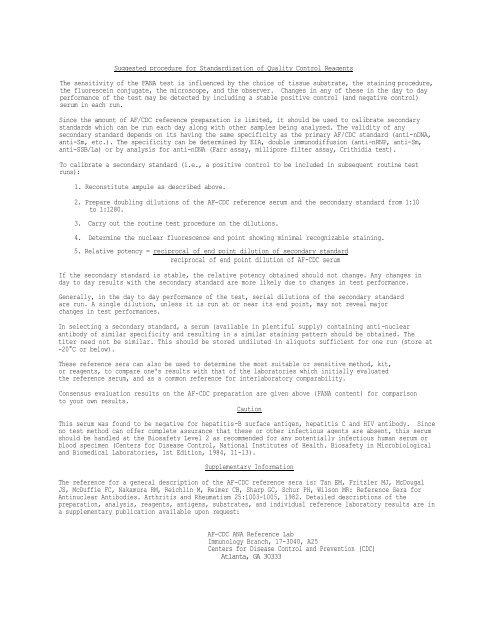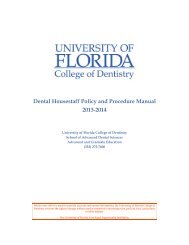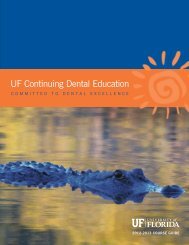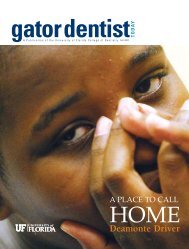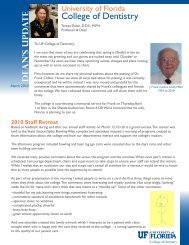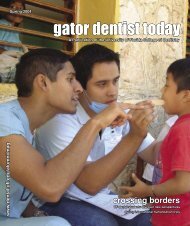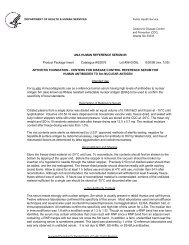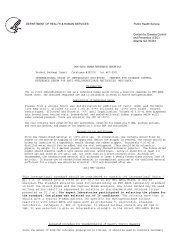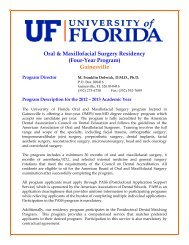Centromere pattern FANA
Centromere pattern FANA
Centromere pattern FANA
Create successful ePaper yourself
Turn your PDF publications into a flip-book with our unique Google optimized e-Paper software.
Suggested procedure for Standardization of Quality Control Reagents<br />
The sensitivity of the <strong>FANA</strong> test is influenced by the choice of tissue substrate, the staining procedure,<br />
the fluorescein conjugate, the microscope, and the observer. Changes in any of these in the day to day<br />
performance of the test may be detected by including a stable positive control (and negative control)<br />
serum in each run.<br />
Since the amount of AF/CDC reference preparation is limited, it should be used to calibrate secondary<br />
standards which can be run each day along with other samples being analyzed. The validity of any<br />
secondary standard depends on its having the same specificity as the primary AF/CDC standard (anti-nDNA,<br />
anti-Sm, etc.). The specificity can be determined by EIA, double immunodiffusion (anti-nRNP, anti-Sm,<br />
anti-SSB/La) or by analysis for anti-nDNA (Farr assay, millipore filter assay, Crithidia test).<br />
To calibrate a secondary standard (i.e., a positive control to be included in subsequent routine test<br />
runs):<br />
1. Reconstitute ampule as described above.<br />
2. Prepare doubling dilutions of the AF-CDC reference serum and the secondary standard from 1:10<br />
to 1:1280.<br />
3. Carry out the routine test procedure on the dilutions.<br />
4. Determine the nuclear fluorescence end point showing minimal recognizable staining.<br />
5. Relative potency = reciprocal of end point dilution of secondary standard<br />
reciprocal of end point dilution of AF-CDC serum<br />
If the secondary standard is stable, the relative potency obtained should not change. Any changes in<br />
day to day results with the secondary standard are more likely due to changes in test performance.<br />
Generally, in the day to day performance of the test, serial dilutions of the secondary standard<br />
are run. A single dilution, unless it is run at or near its end point, may not reveal major<br />
changes in test performances.<br />
In selecting a secondary standard, a serum (available in plentiful supply) containing anti-nuclear<br />
antibody of similar specificity and resulting in a similar staining <strong>pattern</strong> should be obtained. The<br />
titer need not be similar. This should be stored undiluted in aliquots sufficient for one run (store at<br />
-20°C or below).<br />
These reference sera can also be used to determine the most suitable or sensitive method, kit,<br />
or reagents, to compare one's results with that of the laboratories which initially evaluated<br />
the reference serum, and as a common reference for interlaboratory comparability.<br />
Consensus evaluation results on the AF-CDC preparation are given above (<strong>FANA</strong> content) for comparison<br />
to your own results.<br />
Caution<br />
This serum was found to be negative for hepatitis-B surface antigen, hepatitis C and HIV antibody. Since<br />
no test method can offer complete assurance that these or other infectious agents are absent, this serum<br />
should be handled at the Biosafety Level 2 as recommended for any potentially infectious human serum or<br />
blood specimen (Centers for Disease Control, National Institutes of Health. Biosafety in Microbiological<br />
and Biomedical Laboratories, 1st Edition, 1984, 11-13).<br />
Supplementary Information<br />
The reference for a general description of the AF-CDC reference sera is: Tan EM, Fritzler MJ, McDougal<br />
JS, McDuffie FC, Nakamura RM, Reichlin M, Reimer CB, Sharp GC, Schur PH, Wilson MR: Reference Sera for<br />
Antinuclear Antibodies. Arthritis and Rheumatism 25:1003-1005, 1982. Detailed descriptions of the<br />
preparation, analysis, reagents, antigens, substrates, and individual reference laboratory results are in<br />
a supplementary publication available upon request:<br />
AF-CDC ANA Reference Lab<br />
Immunology Branch, 17-3040, A25<br />
Centers for Disease Control and Prevention (CDC)<br />
Atlanta, GA 30333


